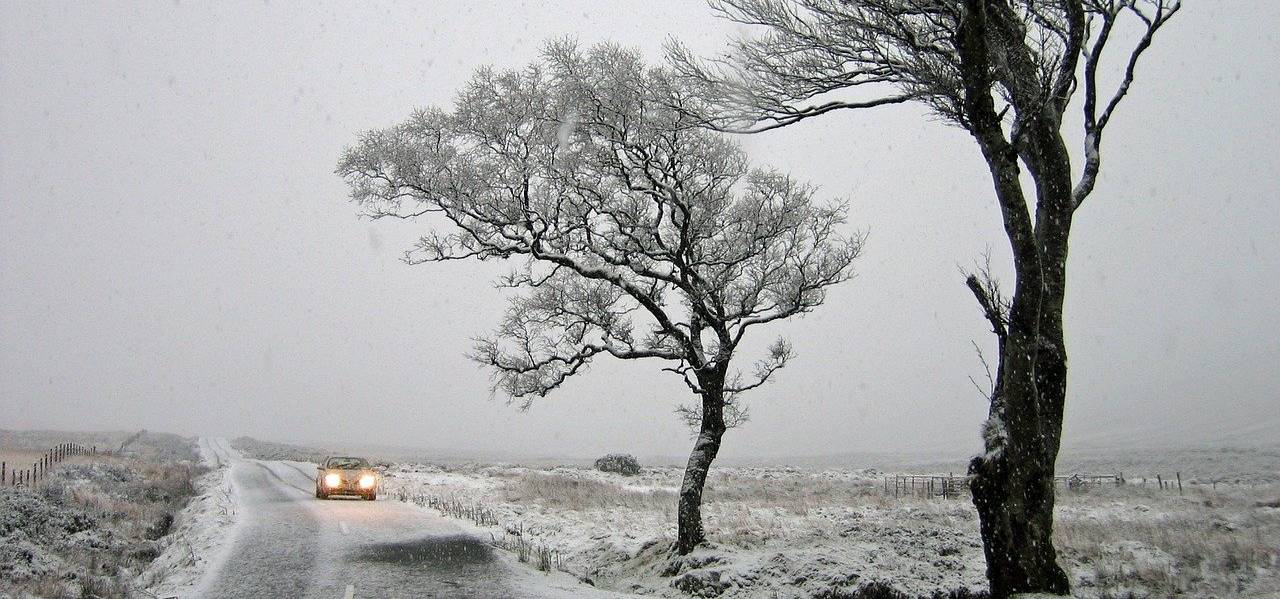Winter driving mistakes! How to drive in winter? What should be considered when driving in winter? What are the mistakes in winter driving? Let’s focus on the mistakes in winter driving in line with the recommendations of the driving experts.
Winter Driving Mistakes

Driving becomes more dangerous in winter, as the roads are slippery due to snow and ice. Accordingly, accident rates increase during the winter months. In order to minimize this risk, there are points that we need to pay attention to.
Tire Pressure
Tire pressure should be at the recommended pressure in winter as in summer. The snow that fills between the surfaces of the winter tire ensures that the tire of the vehicle clings to the ground while moving on the snow. In this way, the vehicle moves forward by holding on to the snow on the ground. If the tire pressure is below the recommended level, the tire cannot grip the surface on the ground. For this reason, the car has difficulty moving forward. During snowfall, tire pressures should be set 10% higher than the recommended tire pressure. This tip can give you an advantage in winter driving.
Type of Tire
The purpose of winter tires is to drive cars through all winter conditions. This includes snowy and rainy weather conditions. The first difference between summer tires and winter tires is the temperature. The material of summer tires is designed for hot weather conditions. Summer tires do not provide good grip at temperatures of 7 degrees and below. The material of winter tires is softer. This is beneficial for ground grip in winter conditions. The second is the form of the tire. The structure of winter tires is designed for snowy and rainy ground. Winter tires have the ability to evacuate the water that occurs on snowy and rainy ground. Summer tires are inadequate compared to winter tires in this regard. It is very difficult to drive on snowy and icy roads with summer tires. Therefore, if you live in a place where the air temperature falls below 7 degrees in winter, you should be careful to use winter tires.
Moving the Car
Let’s look at another point that you should pay attention to while driving on a snowy and icy ground. The car should be moved with very slow throttle and should be driven carefully and slowly on the road. If the driver suddenly accelerates, the car will start to spin. This will make it difficult for the car to move forward. In winter, using the vehicle in economy mode will benefit this situation. Economic mode will minimize the car’s throttle response, allowing the car to react more slowly even when throttle is suddenly applied. A non-aggressive driving in winter will make it easier to drive.
How to Drive in Winter?

- Brake Usage
Road conditions become unfavorable in winter conditions due to cold weather. Ice roads prepare the ground for accidents. Some of these accidents can be prevented by using the correct brakes. Unnecessary braking should be avoided on snowy and icy ground. The braking distance of the vehicles increases in winter conditions. This distance will increase especially if the ground is snowy and icy. As the braking distance increases on slippery roads, the time the ABS is active will also be longer. In this case, you cannot stop the vehicle in a shorter distance by pressing the brake fully and activating the ABS system. The purpose of the ABS system is not to reduce the braking distance, but to ensure full control of the steering wheel by preventing the wheels from locking in sudden braking. If you try to stop with ABS by loading the gas on snowy and icy ground, the vehicle will not stop, it will continue to move forward. What needs to be done is to try to stop without activating the ABS system by touching the brake lightly. The shortest braking distance is achieved in this way. In winter conditions, you should avoid sudden movements by touching the brake softly, and the braking distance should be adjusted well with the car in front.
- Washing the Car
When snow starts to fall in winter, salting works are carried out in order to open the roads. The wheels of your car will splash the mud and salt from the road onto the body of the car. This will damage the paintwork and some parts of the vehicle. Salting work is a useful method to keep the road from becoming frozen, but splashing salt damages the vehicle and most of all, exposed areas where there is no paint on the vehicle. It also accelerates the corrosion of vehicle parts exposed at the bottom of the vehicle. Therefore, it is extremely important to wash the car if these roads are used in winter. Washing the car is an important point in extending its service life.
Drive in Winter

- Fuel
It is beneficial for the car to fill the fuel tank to the maximum in winter conditions. When fuel is low in cold weather, the air in the tank will condense and create small drops of water. These drops of water can be mixed with gasoline or diesel. At the same time, low amounts of fuel can freeze quickly where the cold is very hard. In order to avoid such negative situations, it would be the right choice to park the car in this way with maximum fuel.
- Tire Chain
Sometimes even if a winter tire is used, it will not be sufficient in harsh winter conditions. It is very important to use tire chains if you are going to places where winter conditions will be very difficult or if you are living in such a place. Tire chains should be mounted on traction-only tires. Tire chains should be mounted on the front tires or the rear tires, depending on whether the car is front or rear wheel drive. You should always carry tire chains in your car against bad winter conditions.
Click for the prices to rent a car at İstanbul Sabiha Gökçen Airport!
Click for the prices to rent a car at İzmir Adnan Menderes Airport!
Click for the prices to rent a car at Ankara Esenboğa Airport!










Add comment